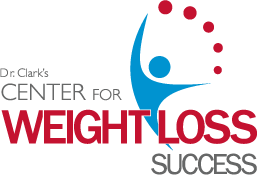Live an Energetic LIfe at a Healthy Weight
We provide services and support for you to lose weight for a lifetime! No more crash diets or torturous workouts that seem to get you nowhere. At Dr. Clark’s Center for Weight Loss Success, we empower you with knowledge, tools, accountability, and support. Plus, shop Dr. Clark-approved meal replacement shakes, healthy entrees, and top-quality vitamins right in our store. Along with our medical weight loss and hormone therapy services, we help you to achieve true weight loss success and live a life you love!

My Weight Loss Academy + Semaglutide Injectable Medication
Injectable medications used for Type 2 Diabetes are now approved for weight loss. They have been effective in decreasing appetite and cravings with an average weight loss of 15-20% of body weight when used properly.

My Weight Loss Academy
My Weight Loss Academy™ is a 3-month online program that simplifies what you need to know so you not only lose weight but understand how to keep it off for life!


My Weight Loss Academy + Appetite Suppressants
Appetite suppressants can be extremely helpful for those who still experience a problem with hunger after implementing an adequate protein and low carbohydrate diet.


Back on Track After Weight Loss Surgery
Back on Track After Weight Loss Surgery is a 6-week online course that includes weekly access to Dr. Clark, a 21-day weight loss challenge, an online support group, and more!

Lipo-B12 Injections
Burn fat with Methionine, Inositol and Choline plus B12 (LIPO+B12). These injections work best when paired with our Jump Start diets!

Losing Weight USA
The weight loss membership that’s serious about your success! Gain access to a private membership site, weekly recipes, and a supportive and motivating community.






 Cat Keller has a wealth of experience in marketing, e-marketing, advertising and customer service and manages our Weight Loss Nutritional Store. She is always planning something fun and exciting. special events, discounts, giveaways – it’s never a dull moment. She is happy to help you with questions you may have regarding our products or services. Cat is a graduate of William & Mary, where she studied Government/Pre-Law and minored in Marketing.
Cat Keller has a wealth of experience in marketing, e-marketing, advertising and customer service and manages our Weight Loss Nutritional Store. She is always planning something fun and exciting. special events, discounts, giveaways – it’s never a dull moment. She is happy to help you with questions you may have regarding our products or services. Cat is a graduate of William & Mary, where she studied Government/Pre-Law and minored in Marketing.